Rotational bale grazing: controlled placement of bales in a field for livestock to consume as a supplement to pasture forage in the winter.
Hidden Creek Farm trialed this practice in the winter of 2021 in conjunction with Virginia Extension. The project was based on the work of Greg Halich with the University of Kentucky and on a 2017 report, “Impacts of Bale Grazing on Herbage Production, Forage Quality and Soil Health in South-central North Dakota,” from North Dakota State University Extension.
A link to Greg Halich’s work: https://uknowledge.uky.edu/cgi/viewcontent.cgi?article=1177&context=ky_grazing
A link addressing concerns for bale grazing in southern climates:
https://site.extension.uga.edu/forageteam/2020/09/bale-grazing-101/
Project Goals
- Improve soil health and forage growth
- Adopt an effective practice to supplement livestock winter diets to improve overall animal health and reduce stress
- Serve as model farm
Methods
- 39 bales placed in total
- 3 rounds of bale placement
- 24 head had access to 3 bales for 5 days at a time
- 12 bale sites, 4 control sites in adjacent pasture
- Soil sampling at each bale site and 15ft above and below each bale site
- Sample at bale placement on 4 February and 12 March 2021
- Sample 27 August 2021
- Sample 19 February 2022
- Photograph bale sites to monitor forage regrowth
Results
- Increase in organic matter at bale sites compared to control
- Trend towards increase in phosphorous, potassium, calcium, magnesium, manganese, boron, and Est-CEC
- Visible darker green ring of forage surrounding bale sites
- Broom sedge suppression
- Regrowth of seeded clover and oat with weed pressure at bale sites
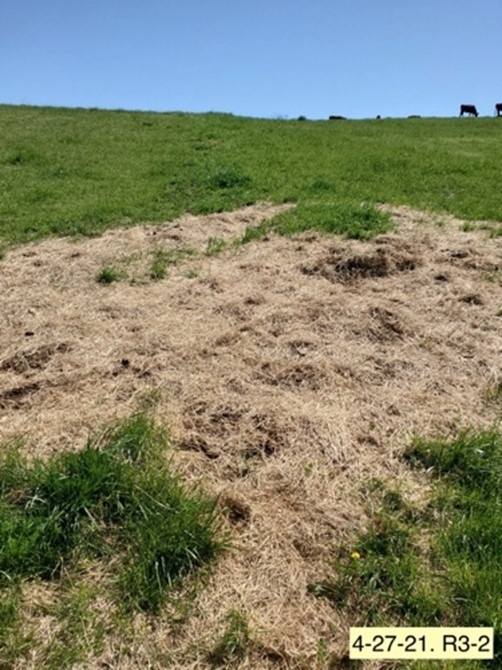
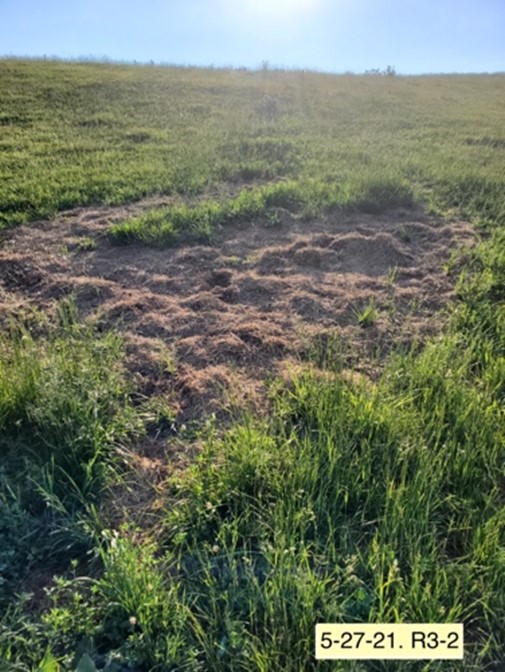
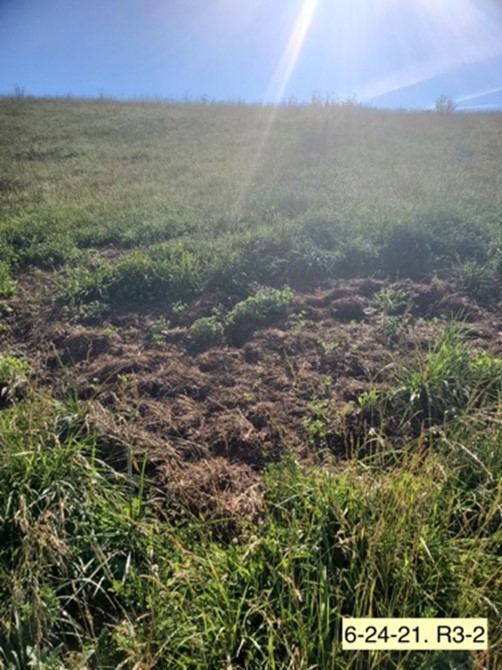
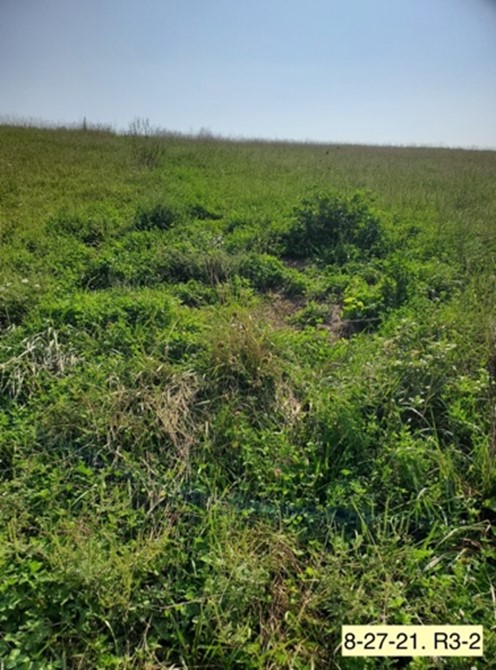
Forage regrowth at one bale site, April – August.
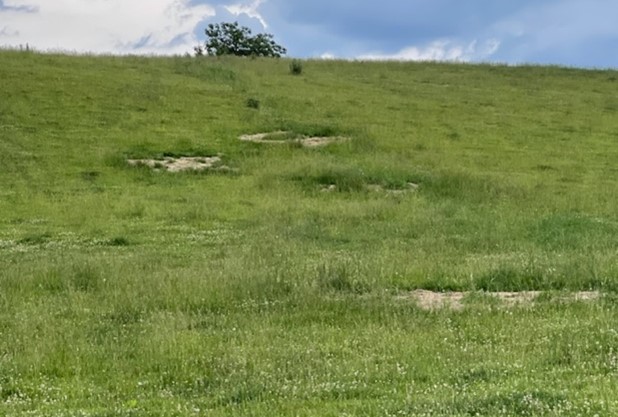
Aerial view of bale grazing pasture. Dark green forage ring visible around bale sites.
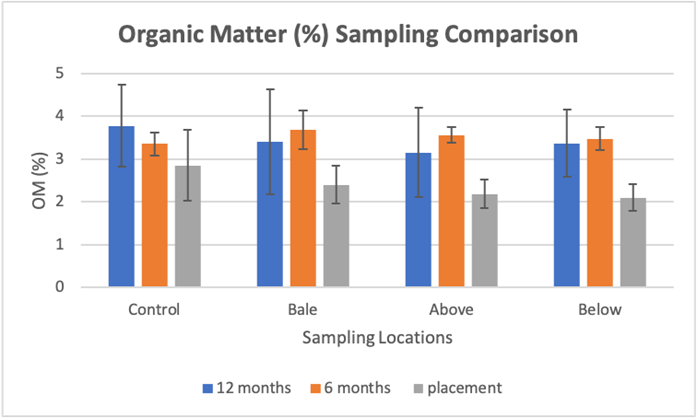
Figure 1. OM(%) sampling comparison. There is an increase in organic matter (%) at all sites between Placement and 12 months. This increase is significant for Bale, Above, and Below at 6 months. The significant increase in organic matter at all sites except control after 6 months suggests that hay bales may have a positive impact on organic matter. Organic matter remains elevated above placement levels after 12 months which suggests that bales may influence organic matter long term.
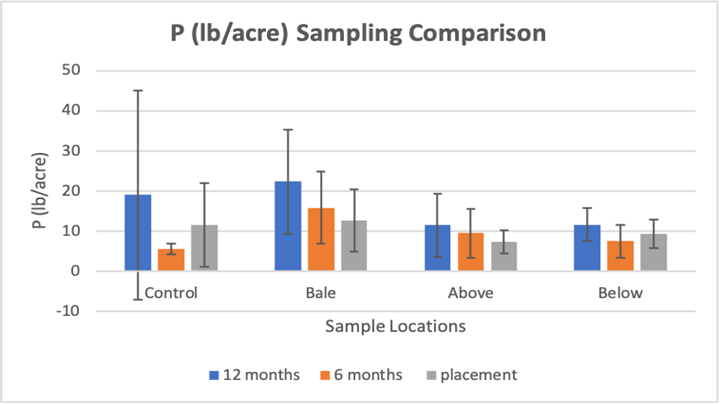
Figure 2. There is a trend toward increased phosphorous for Bale and Above and a trend toward decreased phosphorous for Control between placement and 12 months. This suggests that hay bales may have a positive impact on phosphorous. The increase in phosphorous at control sites after 12 months is likely due to the presence of cows currently grazing. There is high variation across the control sites that indicts high phosphorus (58 ppm) at the site closest to feed and shelter and low phosphorus (5-7ppm) at all other sites. This high variation is not present across bale sites which suggests bale placement helps with distribution of phosphorus.
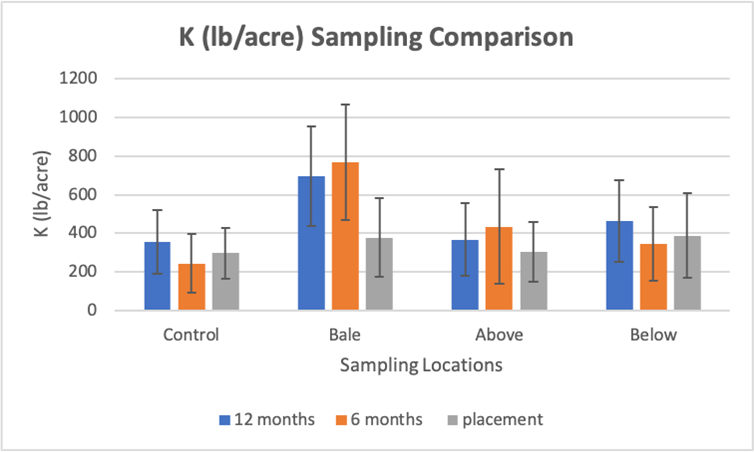
Figure 3. There is no significant difference in potassium (lb/acre) for any sampling location between Placement and 12 months. This suggests that hay bales do not significantly impact potassium with in 12 months of bale placement. There is a trend toward increased potassium for Bale and Above and a trend toward decreased potassium in Control between Placement and 6 months. This suggests that hay bales may have a slight positive initial impact on potassium.
